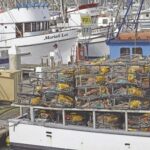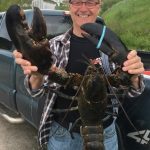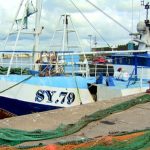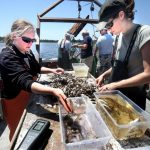Tag Archives: A day in the life

A day in the life of a Cohasset lobsterman
Cohasset lobsterman Adam Donovan grew up in town and got his start with Matt Marr, who retired from lobstering in 2019 after 47 years on the ocean. Growing up, Donovan’s family was close friends with the Marr family, so it came as no surprise when Marr asked Donovan to work for him on his boat during the summer of 2002. He accepted the invitation. “The best part about having Adam [onboard] was that he learned various skills after one try,” he recalled. Photos, >click to continue reading< 07:34

A day in the life of a Georgia shrimper
Capt. Eddie Poppell, 61, arrives with his crew, sons Bubba, 40, and Jake, 24, to start outfitting the F/V Sea Fox for a day of shrimping in the shallow coastal waters of Georgia. Ice is shoveled into bins that are dragged from the fish house to the Sea Fox in anticipation of the boat’s refrigerator-sized coolers being filled with shrimp by day’s end. They throw some provisions for the day onto the boat — snacks, water, sodas and cigarettes — and do a routine systems check. The three men go about their tasks quietly, but with the sureness only countless trips can hone. photos, >click to read< 08:03 Additional COVID financial relief is available to members of Georgia’s marine fishing-industry – >click to read<
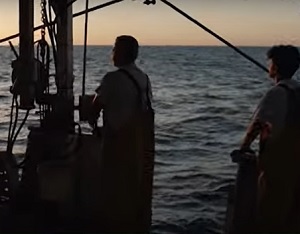
Italy: A day in the life of a fisherman
“Being a fisherman is not only one of the riskiest jobs, it’s also a highly unregulated profession. Every year, dozens of fishermen die in Europe. In 2019, at least 16 lost their lives and hundreds were injured. In this episode of our Ocean series, we join the crew of Captain Davide Sanulli, who harvests mussels off the coast of Emilia-Romagna in Italy. He admits that his days are not always easy, but he never complains. video, >click to watch< 09:33
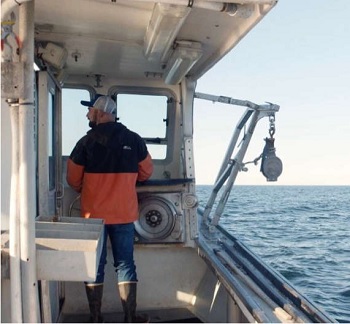
A Day in the Life of Maine Lobsterman, Mike Sargent, in his own words.
“A lot of people think it’s like Deadliest Catch,” Mike Sargent says with a laugh. But his days are very different from the high-stakes drama of a reality show. Learn about what it takes to bring lobster from the bottom of the Atlantic Ocean to your plate with a day in the life of Sargent, in his own words. 3 am: I’ll get up and check the weather forecast. I’ll check the marine buoy data, see if there’s any inclement weather coming or going. If we’re all good to go, I will message my crew, say, “Yep, we’re set to go today.” They’re usually up and at ’em anyway, so I have them on standby. And then, I pack my lunch and head to the wharf. 4 am: I meet my crew down at the wharf,,, >click to read< 16:41

Lobsterman: A day in the life
“Let Her Go” is oversized for Frenchtown’s small harbor, so Ledee bases her in Red Hook, where his day begins in darkness. Rising at 3 a.m., he packs hard-boiled eggs for breakfast, curried chicken for lunch and a cooler of drinks for himself and his mate, 19-year-old Kyle LaPlace. Lobsters and fish support him and his brother Gregory, who co-owns the business, as well as the men who crew with him, build the fish traps, survey and repair the boat and provide dock space. It’s a complete microeconomy. “Fishing has been good to me,” Ledee says. 18 photos, >click to read< 07:50

A Day in the Life of a North Carolina Fisherman
65-year-old Bob McBride greets two helpers before the three steps aboard John 3:16, his 25-foot fiberglass fishing boat. For the next 45 minutes, the fishermen motor east across the Pamlico Sound until they reach an outcropping of wooden stakes rising from the water. The stakes support a series of nets, and McBride navigates his boat into the center. McBride is a pound netter, one of the world’s oldest forms of fishing. Long before Europeans came to the mainland, Native American tribes submerged logs into the Chesapeake Bay to capture Spanish mackerel in their netted maze. For the past 40 years, McBride has followed that same method, as twice a year he sets out a series of nets that form a sort of live aquarium in the Pamlico Sound. >click to read< 13:59
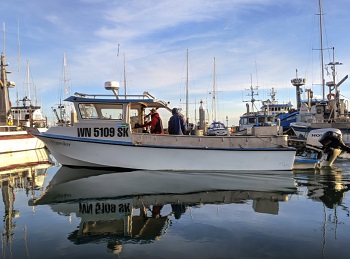
A Day in the Life: Fourth Generation Puget Sound Crabber Whatcom Fisherman Kaegan Gudmundson
Kaegan Gudmundson knows he will soon depart Blaine Harbor on his small commercial crabbing boat Njordor, named after the Norse God. His vessel, at 25 feet, is one of the smaller boats in the fishery. He often operates a one-man crew and never has more than one other person crabbing with him. His boat is built for speed over size, allowing him to quickly travel between his pot locations. Gudmundson’s days start at 4:30 a.m. with coffee and breakfast before heading to the harbor. >click to read< 10:30

A day in the life of a hoki fishing trawler crew
Johnny Thompson was an accountant in Auckland until a snowboarding accident changed his life. “I had it real bad for a start – those first few days were the worst – eventually I came right but everyone takes different amounts of time to get over it.” Thompson is now part of the crew aboard Sealord’s wetfish trawler Otakou , which Stuff joined for a 15-hour expedition for hoki in the Cook Canyon. The day begins at Picton’s Waitohi Wharf at 9am with a five-hour steam to the fishing grounds at the south eastern end of Cook Strait. However, once the vessel hits the open sea it is literally all hands on deck for all 14 crew members. video, >click to read< 17:50
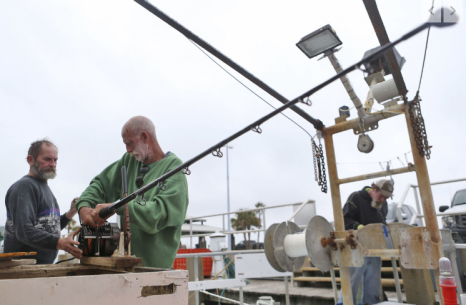
Spend a day in the life of a Florida tuna fisherman
A white scar carved across Carl Roby’s hand tells the story of the time a tuna, a creature he has spent decades harvesting, almost won. It was late. He and his crew were pulling in the miles’ worth of line they strung out earlier that day with hundreds of hooks. It’s methodical work, pulling the line in hand-over-hand and raveling it back onto the spools. The bright spot is when a yellowfin tuna, sleek, strong and worth hundreds, glimmers just under the water. Roby had been fishing for decades at this point. He started as a teenager in the 1970s,,>click to read<21:43
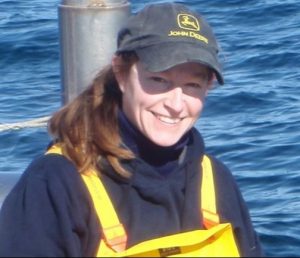
Fisheries scientist takes the spotlight in Fishing Heritage Center’s ‘A Day in the Life’ series
The New Bedford Fishing Heritage Center’s A Day in the Life speaker series continues tonight, March 15, with SMAST fisheries scientist Crista Bank. Beginning at 7 p.m., Bank will share her story and discuss the cooperative research she is currently conducting with the commercial fishing industry. Admission to A Day in the Life is free for Fishing Heritage Center members, and $5 for non-members. The Center is handicap accessible through the parking lot entrance. Free off-street parking available. >click to read<22:33
A day in the life of a New Bedford scallop boat captain
 “We’re really pleased to see such a great turnout,” Fishing Heritage Center Director Laura Orleans told the standing-room-only crowd filling the center on Jan. 11. Pleased, but not surprised at the big turnout. “It’s no surprise because Chris Wright is one of my favorite captains,” Orleans said. By the end of the interesting lecture on his life at sea, and a spirited question-and-answer session, Wright was the favorite scallop boat captain of everyone in the room. “Don’t be in awe of us” braving fierce winds and mountainous waves far offshore, Wright suggested modestly at one point in the question-and-answer period. “It’s just what we do.” What Wright does is skipper the Huntress out of Fairhaven, and the Nordic Pride, based in New Bedford. A shared captain is not uncommon these days, with each scallop boat limited by fishing regulations to a maximum of 75 days at sea, he noted. “I’m getting ready for my 29th year as a captain,” Read the story here 16:32
“We’re really pleased to see such a great turnout,” Fishing Heritage Center Director Laura Orleans told the standing-room-only crowd filling the center on Jan. 11. Pleased, but not surprised at the big turnout. “It’s no surprise because Chris Wright is one of my favorite captains,” Orleans said. By the end of the interesting lecture on his life at sea, and a spirited question-and-answer session, Wright was the favorite scallop boat captain of everyone in the room. “Don’t be in awe of us” braving fierce winds and mountainous waves far offshore, Wright suggested modestly at one point in the question-and-answer period. “It’s just what we do.” What Wright does is skipper the Huntress out of Fairhaven, and the Nordic Pride, based in New Bedford. A shared captain is not uncommon these days, with each scallop boat limited by fishing regulations to a maximum of 75 days at sea, he noted. “I’m getting ready for my 29th year as a captain,” Read the story here 16:32
A day in the life of Alaska’s fishery photographer, Chris Miller
 Fishermen pick fish. Pollock gasp for air. A lobster trap rises to the light-filled sea surface like a treasure chest long-hidden. Juneau photographer Chris Miller’s current show, on view through the end of the month at The Rookery Café, is a watery world filled with fish, boats, and the people that make their living from them. “Fishing is kind of my niche,” Miller said. “There’s not a lot of us out there that do it (photograph fisheries) consistently. Every fishery has its own story.” With a background in photojournalism, it’s those stories Miller’s interested in telling. Read the article here 06:53
Fishermen pick fish. Pollock gasp for air. A lobster trap rises to the light-filled sea surface like a treasure chest long-hidden. Juneau photographer Chris Miller’s current show, on view through the end of the month at The Rookery Café, is a watery world filled with fish, boats, and the people that make their living from them. “Fishing is kind of my niche,” Miller said. “There’s not a lot of us out there that do it (photograph fisheries) consistently. Every fishery has its own story.” With a background in photojournalism, it’s those stories Miller’s interested in telling. Read the article here 06:53






































